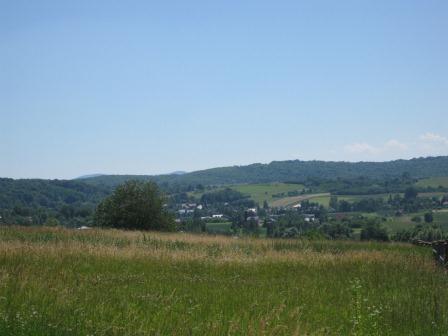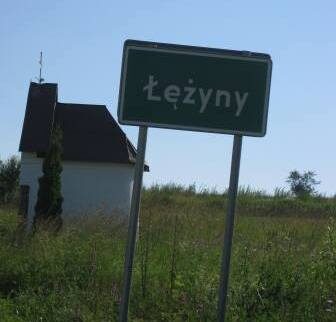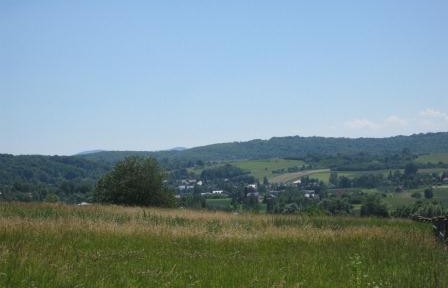
(c) 2012 barefoot photos
Garbaczyk, or Garbacik as it is spelled in Poland, derives from the word garbacz which is Polish for a “tanner.” One who tans leather. The czyk or cik suffix simply means “smaller” or”son of.” So the family would have originated with a tanner, though we have not uncovered him yet.
The Garbaciks originated in the tiny village of Glinik Polski (49°41′N 21°33′E), Tarnowiec, state of Podkarpackie, Poland. If you locate Jasło on a map of Poland, Glinik Polski is about 6 miles southeast. Village population currently numbers 530. Originally there were two villages, Glinik Polski and Glinik Nowy. Eventually these combined into Glinik Polski. The German Glinik is nearby, but a separate village that was settled by, yes, Germans. Iwona told us that Glinik Polski was an ancient village, from the 11 or 12th century. It was a royal village. In the first written records of the town, there is a John Sajdack Garbacik mentioned as an original heir. Further research into this needs to be undertaken!
The name Glinik derives from the Polish word “glina”, which means clay. There is an abundance of clay soil in the area. Polski simply means Polish and this differentiated this town from the neighboring German Glinik. The area is called the Doły Pits; it’s the beautiful rolling Bieszczady Mountains, which is a sub-range of the larger Carpathian Range that stretches across most of Poland’s southern third. The folks who lived here are called Polish Uplanders, or Western Pogórzanie, a distinct Polish sub-ethnic group. Scholars consider the Western Porgozan dialect to be the most western of the Polish dialects.

In the nineteenth century, when our ancestors emigrated to the US, this area was Galicia, part of the Austro-Hungarian Empire. The current Catholic Glinik Polski parish is St. Joseph the Worker, Tarnowiec, which is in the diocese of Rzeszow. Rzeszow is the regional capital as well. Glinik Polski is 32 miles southwest. The parish transferred from Łężyny in 1921.

Lezyny, Jaslo, Poland
(c) 2012 barefoot photos
During the nineteenth century when Josefa Garbacik would have been baptized, the family would have worshiped at St. Nicholas, the beautiful 15th century church in Łężyny, in the current town of Nowy Zmigrod.
Here is information from the parish website: Łężyny parish
church of Saints. Nicholas
parish erected: the fourteenth century.
Address: Łężyny 149
38-230 New Żmigród,
tel. 13 441 51 43,
664 56 82 37
commune: New Żmigród, district: jasielski, Province: podkarpackie pastor: Rev..Henry Barć, RM
Furthermore, there may be family records at the Zrecin Parish, St. Stanislaw, Bishop, the Martyr. This is also a very old parish.
To read about the family of Wojiech Garbaczyk and his wife, Lena Skora, visit this page. These folks are NOT the parents of Jozefa Garbaczyk. We believe her parents were Marcin Garbacik and Theresa Grochowska.
The descendents of Wojiech Garbacik b. 1790 and his wife, Marianna Lopatkiewicz are here. Warning : that is a work in progress, but you can get the gyst of the lines.
If you would like to read a biograph of Jozefa Garbaczyk Moraniec, our immigrant ancestor who married Big Joe Moraniec, go here.
And our foray into Garbacik land is chronicled here.
